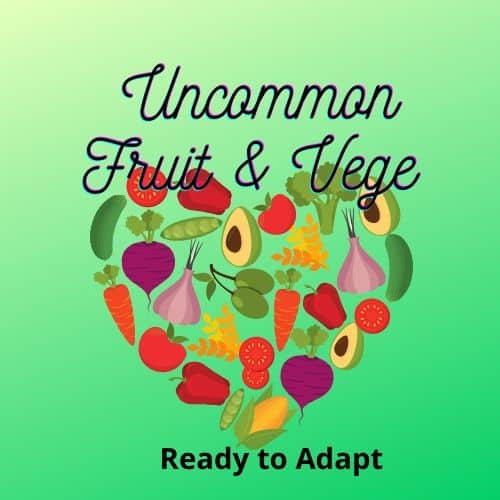
Growing strong healthy vegetables is both rewarding and good for your health both mentally and physically. Every gardener will tell you the secret to strong and healthy plants is good soil with lots of composting humus incorporated. But sadly our soils and plants sometimes need an extra boost. In this article we discuss some cheap and easy homemade fertilisers you probably didn’t know you have around the house or garden.
Why Make Your Own Fertiliser?
Making your own organic fertilizer is both cheap, easy, and will also give you back a sense of control over what you put in your mouth. As a society, we are all becoming increasingly aware of the chemicals that are sprayed on and added to our purchased foods. The best way to take back that control is to grow your own and know exactly what was used in its production.
Many of the items we have around the house or garden and some within the home as well can be fantastic ways to increase fertility as well as being used to assist the growing of our plants. Composting can be messy and a lot of work. If you live in the city or an apartment block it may not be possible to make compost to assist your plants. There are many ways we can do this with simple do it yourself methods.
NPK
Nitrogen, Phosphorous and Potassium are the building blocks for all plants. Some plants need more of one or the other but usually in commercial fertilisers you will find these three elements.
Without enough of any one of these nutrients, a plant will fail.
Nitrogen (N) – nitrogen is largely responsible for the growth of leaves on the plant.
(P) – Phosphorus is largely responsible for root growth and flower and fruit development.
Potassium (K) – Potassium is a nutrient that helps the overall functions of the plant perform correctly.
Knowing the NPK values of fertilizer can help you select one that is appropriate for the type of plant you are growing. For example, if you are growing leafy vegetables like lettuce and spinach, you may want to apply a fertilizer that has higher nitrogen content to encourage leafy growth. If you are growing flowers, you may want to apply fertilizer that has higher phosphorus content to encourage more blooms.
Before you apply fertilizer to your garden beds, it is wise to have your soil tested. This will also help you determine what balance of fertilizer numbers will be appropriate for your garden’s soil needs and deficiencies. But it can also be expensive to send soil samples to a lab. I found a reliable test kit that will have you testing your soil in minutes. It is both reliable and easy to use.

22 Easy & Cheap Homemade Fertilisers
- Urine – Urine is high in nitrogen and before you say Ewww! Men, in particular, have a great ability to add urine directly to the garden and some plants like citrus trees, for example, are quite happy for it to be applied directly. Others require it watered down a bit. So before you flush away that liquid gold considers if you might just be better off collecting and using it for your plants.
- Weeds – We all have them in our gardens but have you ever considered using them to make fertilizer. NO? Weeds placed in a hessian sack or pillowcase will stop the seeds from contaminating your brew and can be soaked in a bucket of water for several days to produce a nitrogen-rich tea that can be poured directly on your garden.
- Banana Peel – Bananas are high in potassium and a good snack for the kiddies and adults alike. Don’t throw away the peels though. Put them through your kitchen whizz and make a slurry to add extra potassium to your fruiting plants especially tomatoes, strawberries, and pumpkins. You will have the best and strongest produce with this little tip.
- Egg Shells – This tip will have you planning your Sunday Breakfast to use as many eggs as possible. Calcium is responsible for the cell walls of plants and getting them forming strong roots. Grind up your dry eggshells and mix with a little hot water. Allow it to steep til cool and pour directly around the base of your plants.
- Coffee Grounds – One of the best fertilizer for acid-loving plants – high in nitrogen. Lots of plants, such as blueberries, rhododendron, roses, and tomatoes, thrive best in acidic soil. Recycle your coffee grounds to help acidify your soil. There are a couple of ways to do this— you can either top dress by sprinkling the used grounds over the surface of the soil, or you can make “coffee” to pour on your gardens. Soak up to six cups of used coffee grounds for up to a week to make garden coffee, then use it to water your acid-loving plants.
- Leaves – Autumn leaves are particularly useful as they encourage worm activity in the soil. Collect your leaves and crush them in your hands as you go. Then simply top dress your garden or mix it into the soil for some added worm activity. The worms will reward your efforts with their pee and poo as well.
- Comfrey – If you have some comfrey growing or maybe you have a friend who does, grab some leaves and put them in a colander over a bucket. Weigh down the leaves with a few rocks and let them decompose. The liquid caught in the bucket is like liquid gold. If you are in a hurry you can blitz the comfrey and add a little molasses to feed the soil microbes. Comfrey is known as a dynamic accumulator so you get a whole bunch of minerals in this concoction. Be sure to water it down – I use 20mls of comfrey juice to 10 liters of water. The plants love it.

- Nettles – Stinging nettles while a pain in the proverbial to pull out of the yard are a great source of minerals for your garden. Make them up in a similar way to the comfrey listed above. Be sure to water it down before adding to your garden.
- ASH – Ash from your fireplace can be scratched into the soil around your plants and is particularly useful if you have highly acid soil. Just keep it away from around the base of the plants. Use it the same as you would if you were applying lime.
- Worm Juice – If you have a worm bin you probably already know how valuable their pee is in feeding your plants. The liquid gold they produce is even safe for tender native plants. As always dilution is the key.
- Manure – Composted manure can be turned into your soil to increase the humus levels but fresh manure is best made into a tea and applied diluted.
- Grass clippings – A thin layer (no more than 1 inch thick) of grass clippings will add nitrogen to your soil and help provide a mulching layer at the same time.
- Molasses – Beleive it or not plants need complex sugars to thrive but they won’t be getting that from the Molasses. In fact, what you are feeding with this brew is the microbiome that lives in the soil. They love molasses and by providing it to them you will assist them to free up the sugars that your plants need. Isn’t nature amazing?
- Fish – If you live by the coast or are lucky enough to have a fishmonger nearby, why not collect the fish heads to make a fish emulsion. No problem if you don’t have these resources handy you can do the same with a store-bought can of salmon. Simple blitz your fish and soak it in water for a few days. It will stink but is great for the garden.
- Seaweed – Again if you are close to the coast you will likely find plenty of seaweed on the beach. If not then make a special trip sometime. Wash the salt off. Dry your seaweed on large trays in the sun until its crispy. Then grind it up to a powder for long term storage. Add a small scoop to a bucket of water when you need to give the garden a boost. We do this monthly during our peak growing season.

- Cooking Water – The water you have cooked your lovingly prepared meal in is full of nutrients add it directly back to the garden after it has cooled.
- Aquarium Water – Have you got a fish tank. All that lovely water the fish poop in is wonderful and full of algae as well. Your garden will sing after applying this.
- Epsom Salts – a great source of magnesium particularly loved by Camellias. Magnesium is the powerhouse of photosynthesis and without it plants really struggle. So if your plants are looking a little sad they may really appreciate a dose of Epsom salts.
- Gelatin – Gelatin can be a great nitrogen source. Dissolve 1 package of gelatin in 1 cup of hot water and then add 3 cups of cold water. Pour directly on the soil around your plants once a month. This is great for houseplants!
- Green Tea – A weak solution of green tea can be used to water plants every 4 weeks. Use 1 teabag to 2 gallons of water.
- Powdered or Old Milk – Calcium we all know is abundant in milk – so don’t throw out the old milk – mix it with some water and put it on your plants.
- Kitty Litter – Not just any kitty litter will do. Specifically, there is a brand of kitty litter that is made with lucerne and bentonite. Mix with enough water to soften and mix into your soil. It will give your soil microbes a huge boost and help bring the worms in.
Whatever you choose to use for whatever reason there is always a nature provided source. There is never any reason to reach for those chemical based fertilisers again.
For more homemade fertiliser recipes check out our ebook.


